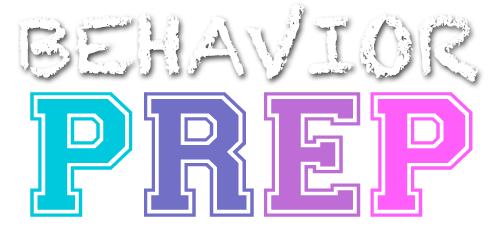G.1 Design and evaluate positive and negative reinforcement procedures
Designing and evaluating positive and negative reinforcement procedures involves creating interventions that increase desired behaviors by either providing a rewarding stimulus (positive reinforcement) or removing an aversive stimulus (negative reinforcement). Evaluation ensures that these procedures effectively increase the target behavior while being ethical and appropriate for the individual.
Positive Reinforcement
Positive reinforcement involves presenting a desirable stimulus or consequence immediately following a behavior, which increases the likelihood of that behavior recurring in the future.
Example: A child completes their homework (behavior) and receives praise and a small reward, such as a sticker or extra playtime (positive reinforcer). This positive reinforcement increases the likelihood of the child completing their homework again in the future.
Negative Reinforcement
Negative reinforcement involves removing or avoiding an aversive stimulus or consequence contingent upon a behavior, which increases the likelihood of that behavior occurring again in the future.
Example: A student is given a difficult math assignment (aversive stimulus). The student engages in on-task behavior (behavior) to escape or avoid the difficult task. As a result, the teacher removes the assignment (negative reinforcer). Removing the aversive task increases the likelihood of the student engaging in on-task behavior in the future when faced with similar challenging assignments.
A BCBA is working with a child struggling to complete homework. To design a positive reinforcement procedure, the BCBA implements a system where the child earns extra playtime for each homework assignment completed. The BCBA monitors the child’s behavior to ensure that homework completion increases over time.
Simultaneously, the BCBA designs a negative reinforcement procedure where the child can avoid a disliked chore (e.g., extra cleaning tasks) if they complete their homework on time. The BCBA evaluates both procedures by tracking the child’s homework completion rates and adjusts the reinforcement strategies if needed to ensure effectiveness and ethical use.
It’s important to note that negative reinforcement is not the same as punishment. Negative reinforcement involves removing or avoiding an aversive stimulus to increase behavior, while punishment involves applying an aversive stimulus to decrease behavior.
BCBAs carefully select and implement positive and negative reinforcement procedures based on individualized assessment and analysis of the target behavior. They consider the person’s preferences, the specific behavior they want to strengthen, and the overall goals of the intervention.
In both positive and negative reinforcement procedures, the key is to identify and use meaningful and motivating reinforcers for the individual. This ensures that the reinforcement is effective in strengthening the desired behavior. Additionally, BCBAs monitor the effectiveness of reinforcement procedures over time and make necessary adjustments to maintain their effectiveness and promote continued behavior change.
